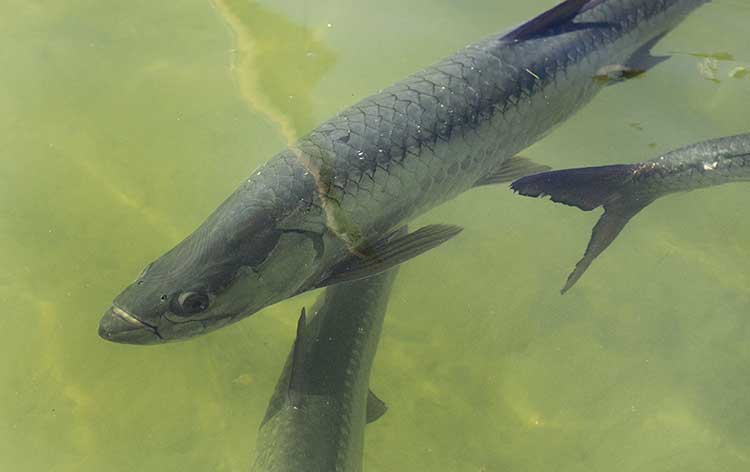Photo by Sam Howzit
By Greg and Bryan Watts
Something we love to do this time of year before all the hard fronts begin to arrive is visit the Charlotte Harbor area for fast small tarpon action. While most of the attention in this tarpon hotspot on the southern Gulf coast of Florida is given to those big Boca Grande bruisers in the spring and summer, the small guys are a lot of fun.
Young tarpon come out to play in October, and the bite can last until December especially in the mouths of the Myakka and Peace Rivers. These rivers meet in the headwaters of the harbor around Port Charlotte. Two freshwater rivers that feed the harbor are where tarpon love to winter. Here the water is more stable and often warmer than the harbor itself.
Other fish in big numbers move into these rivers this time of year for the same reason. Snook, redfish and largemouth bass live here and share food with the tarpon.
The same conditions exist along the east coast where tarpon move back into residential canals, under bridges and in backcountry bays.
We simply idle up these bodies of water and look for tarpon rolling or busting bait. Once we see a few tarpon, we go into stealth mode and study where the most activity is shown and concentrate in that area.
Most flats tackle will do the job as long as the leader is beefed up to 30- and 40-pound test fluorocarbon. We prefer Berkley Trilene 100% Fluorcarbon as it is virtually invisible under the surface. For our spinning reels, we spool with 10- to 20-pound test Spiderwire Stealth, 30-pound test Stealth on baitcasters.
Snook and tarpon, even the smaller ones, are tackle busters, so we rely on a 7-foot medium heavy rod. This has the backbone to control the fish but light enough to enjoy the fight.
Tarpon can be suckers for a weightless Berkley Gulp! Jerk Shad, either pearl white or rootbeer gold color, rigged on a 3/0 or 4/0 Superline hook. This is a bit too light of a bait for anything but spinning gear, so for our baitcasters we use a 1/8- to ¼-ounce jig head with a Berkley PowerBait 4-inch Mullet in either Dorado or glow/chartreuse color. Now we’re covered from top to bottom.
An early morning topwater bite is not unusual but lasts only as long as the sun stays low. Once the sun is up, the fish drop down but the bite stays strong.
After we spot fish rolling slowly on the surface, we’ll cast about 5 or 6 feet directly in front of the fish. The trick is to work the baits slowly. Usually tarpon do not want a bait that is quickly retrieved. The bite will feel like a tiny thump. These fish have a tough lip, so a hard hook set is required.
To release a tarpon, we handle with care. They still have some fight left even after being boat side. A firm hold on the fish prevents damage while we remove the hook. It is important that we return the fish to the water quickly and revive until he can swim away on his own.
[easy-social-share]
